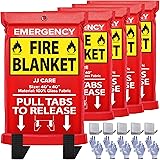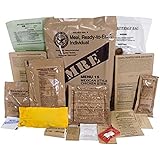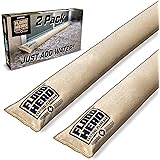The Importance of Being Prepared
Why Preparation Matters
From the onset, let me tell you that preparation is not just a word—it’s a lifesaver. Through my experiences both as a marketing expert and a planner, I’ve come to realize how critical it is to always have a plan, especially for unexpected events. There’s a famous saying that if you fail to plan, you plan to fail. This couldn’t be truer when it comes to emergencies like needing to shelter in place.
We live in an unpredictable world. Natural disasters, public safety threats, and unexpected crises can strike without warning. Trust me, I’ve been caught off guard before, and it’s not a situation you want to be in. Having a plan gives you peace of mind and ensures that you’re not scrambling to figure out what to do in the heat of the moment.
Remember the time when the weather report was totally off and I had no clue what was going on? That was the day I realized how valuable it is to prepare for even the most unlikely scenarios. Since then, preparation has become second nature to me, and it should be for you too.
Understanding the Risks
Not all hazards are created equal. We need to understand the various risks that might prompt us to shelter in place. Weather emergencies like tornadoes, hurricanes, or blizzards require you to stay put and stay safe. Then, there are situations like chemical spills or active threats that make leaving your home more dangerous than staying inside.
Imagine this: During a chemical spill, the outside air could be dangerous to breathe. Knowledge is power, and understanding these risks can make all the difference. This isn’t about living in fear; it’s about being wise and prepared. So take note of what types of emergencies are most likely in your area and plan accordingly.
Living in Florida, I’ve had my fair share of hurricane preparedness, so I know the drill pretty well. But whether you’re in tornado alley or an earthquake zone, understanding your unique risks helps tailor your sheltering plan more effectively.
The Psychological Benefit of Being Prepared
There’s more to preparation than just the physical aspect. Let me share something personal: The biggest change I noticed when I started preparing was the reduction in anxiety. When you have a plan, you feel in control, even when you’re not. That psychological benefit of knowing you’re ready can’t be overstated.
Over the years, I’ve realized that mental preparedness is just as crucial. Knowing that you have everything set up to keep your family safe brings peace of mind. We live in a world where information can be overwhelming, but a solid plan acts like a mental anchor amidst the chaos.
== > What if ... Get a FREE Subscription to PREPARE
Take it from me, the peace of mind that comes from being prepared is priceless. It lets you focus on what’s important, not on what you forgot to do. So give it some thought, and you’ll see just how reassuring it can be.
Creating an Effective Shelter-in-Place Plan
Start with a Blueprint
Look, creating an effective plan starts with having a clear blueprint. You don’t need to complicate things; simple is sometimes better. The first step is choosing a safe spot in your home where everyone can gather. Trust me, you don’t want to be deciding on the fly.
For instance, in my house, we’ve designated the basement as our go-to shelter area. It’s vital to choose a space with minimal windows and plenty of storage for emergency supplies. But remember, what works for me might not work for you. Customize it according to your home’s layout and your family’s needs.
Once you’ve chosen your spot, the next step is to make sure everyone in the household knows about it. It seems simple, but in an emergency, this knowledge can be the difference between chaos and order. Hold a family meeting, walk everyone through the plan, and ensure everyone’s on the same page.
Define Roles and Responsibilities
Now, we all know the saying, “too many cooks spoil the broth,” right? The same goes for emergency situations. Assigning roles and responsibilities to each family member can streamline your response and reduce confusion during an actual event.
For example, in my family, I’m responsible for grabbing the emergency kit, my spouse takes care of gathering the pets, and our eldest helps the younger siblings. This division of labor ensures that no one’s running around aimlessly, which can be a lifesaver (literally) in high-stress situations.
Not to mention, assigning roles gives each person a sense of duty and responsibility, helping them remain calm and focused. So go ahead, draft a plan, assign roles, and practice it a few times. You’ll thank yourself later.
Run Drills Regularly
Just having a plan isn’t enough—you’ve got to practice it! I can’t stress this enough. Running drills helps everyone get familiar with the protocol, and it helps you spot any gaps in your plan. Practice makes perfect, and in this case, practice could save lives.
In my household, we run drills at least twice a year. We gather in our designated shelter area, check our supplies, and go over our roles. It’s a quick exercise but incredibly effective. And guess what? It gets easier every time we do it.
You don’t have to treat it like a military exercise. Make it fun and educational for the kids. The more comfortable everyone is with the plan, the smoother things will go when it’s time to put it into action. So take some time, gather the crew, and practice your plan.
Essential Supplies for Sheltering in Place
Stockpiling Basic Necessities
Alright, let’s talk about supplies. Trust me, you don’t want to be caught without the essentials. Start with the basics: water, food, and medical supplies. A good rule of thumb is to have enough to last at least 72 hours.
In my experience, having a mix of canned goods and non-perishable items works best. Make sure you include a manual can opener, because an electric one won’t do you much good if the power’s out. And don’t forget water—at least one gallon per person per day.
Medical supplies are just as crucial. A well-stocked first aid kit can be a lifesaver. Include basics like bandages, antiseptics, and any prescription medications. I also keep a small fire extinguisher and a multi-tool in my kit. You never know when you might need them.
Comfort Items
Besides the basics, think about comfort items. When you’re stuck indoors for an extended period, a little comfort can go a long way. Simple things like blankets, pillows, and a good book can make a world of difference.
In my shelter area, I’ve also included a deck of cards and a couple of board games. It might sound trivial, but keeping minds occupied during a tense situation is invaluable. Everyone needs a bit of distraction, and comfort items can provide that.
Don’t forget about personal hygiene either. Stock up on items like toilet paper, soap, and toothbrushes. If you’re like me, you’ll also want some hand sanitizer and disinfecting wipes. Keeping clean is important, both for health and for comfort.
Technology and Communication Tools
Technology can be a lifesaver—literally. Make sure you have a reliable source of communication. A battery-powered or hand-crank radio can keep you informed when the internet and TV are down. I’ve got mine tuned to the local emergency station.
Your smartphone is another key tool. Keep a portable charger and spare batteries on hand. Even if the power goes out, you want to have a way to contact loved ones and emergency services.
Lastly, consider a simple whistle or air horn. It sounds old-school, but if you’re trapped or need to signal for help, it can be incredibly effective. It’s yet another layer of safety you’ll be glad you added.
Communication Strategies During a Shelter-in-Place Situation
Setting Up a Communication Plan
Communication is key, folks. You need to have a solid communication plan for keeping in touch with both your family and external services. Start by designating a family contact person and setting up a group text or chat.
In my home, we’ve set up an emergency group chat that everyone knows to use. This includes extended family and close friends so that we can quickly and easily share updates. It has been a game-changer for our peace of mind.
Also, choose an out-of-town contact person. Sometimes it’s easier to get a message out of the impacted area than within. Inform everyone in your family who that contact is, and make sure they have that number saved and memorized.
Utilizing Social Media
Believe it or not, social media can be incredibly useful during an emergency. Platforms like Facebook and Twitter can provide real-time updates on the situation. Following local authorities and emergency services can keep you informed.
In my experience, social media has been a lifesaver during natural disasters. I’ve followed local news accounts and official government profiles to stay updated. It’s also a way to let people know you’re safe, which means the world to your loved ones.
Just be cautious about sharing your exact location or too many personal details. Use social media wisely, and it can be a powerful tool in your emergency toolkit.
Communication with Emergency Services
Always know how to contact emergency services. Keep a list of important numbers handy, including local emergency services, hospitals, and utility companies. This is a straightforward yet crucial part of your plan.
Remember, texting 911 is now an option in many areas. If calling isn’t possible, texting could be a lifesaver. Familiarize yourself with the capability in your region before an emergency strikes.
Lastly, always have a backup means of communication—a landline, walkie-talkies, or even flares. In an emergency, redundancy is your friend. The more ways you have to communicate, the better off you’ll be.
FAQs
What is sheltering in place?
Sheltering in place means staying indoors, often in a designated safe room, to protect yourself from external hazards like natural disasters or chemical spills. It’s a precautionary measure until it’s safe to go outside.
How often should I update my shelter-in-place plan?
It’s advisable to review and update your shelter-in-place plan at least once a year. However, after any major life changes—like moving, changing family dynamics, or new local threats—you should revise it accordingly.
What should be in my emergency supplies kit?
Your emergency supplies kit should include essentials like water, non-perishable food, first aid supplies, personal hygiene items, important documents, and comfort items like blankets and games. Don’t forget communication tools like a radio and portable charger.
How can I keep my family calm during a shelter-in-place situation?
Keeping your family calm requires preparation and practice. Assign roles, run regular drills, and have comfort items available. Maintain open communication and use distractions like games to help manage stress during the situation.






